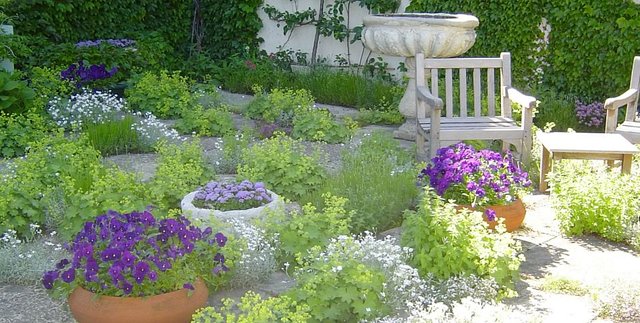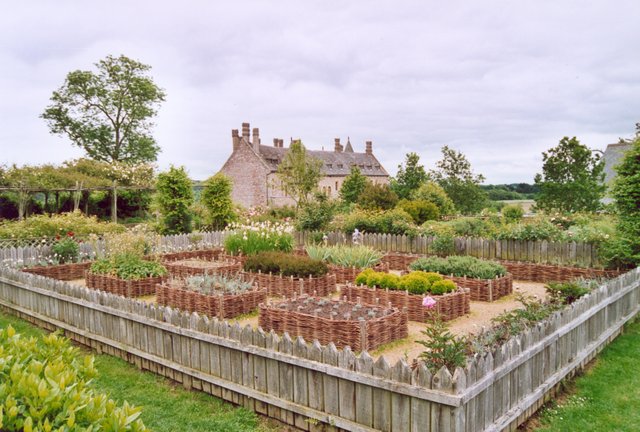Create a French Herb Garden

The French have a very unique gardening style that is very luminous and highly distinguished. To create a French Herb Garden you will need to capture the contemporary feel that the French are renowned for in their Gardening. Intricate patterns litter their vast parks in such a manner that takes your breathe away. To create anything short of that would not sum up to a French Garden. The French have a very distinct flavour pattern in the food they prepare. This is due to the specific varieties of Herbs, and Spices grown in the area. A good French Herb Garden should maintain all of these aspects while still being original and unique.

The best place to start on any gardening expenditure is in the dirt. The French plant life usually thrive in extremely well drained, loamy soil that has sufficient nutrients without having an over whelming amount of content within it.
Once you have plotted your garden location, picking your Herbs should be the next step. As stated earlier, the French have a few particular Herbs and Spices that are very commonly used in their meal preparations. A few examples of these Herbs include; Chervil, Chives, Marjoram, and Tarragon. These can be added to the rest of the Herbs that you have selected to be in your French Herb Garden.

Maintaining a well balance between Form and function will be detrimental to the quality of your garden when it is finished. You do not want to have to many Herbs in comparison to your flowers and landscaping or you run the risk of losing the creative stimulation that is given by the symmetry as well as intricacy of the unique patterns designed into the landscape. You also don't want the landscape to overwhelm either, as you do not want your garden to be all beauty and no function. Finding a flawless balance that lets your French Herb Garden yield a plentiful harvest, but still pleasing to the eye is crucial. This may be a more expensive and larger scale version of a French Herb Garden, but it will convey the aspects of a French Herb Garden more thoroughly then a smaller, less expensive Garden.

Another way of creating a beautiful and successful French Herb Garden is to go on a much smaller scale, using the same Herbs as listed before but instead of a full size outdoor Garden with extensive landscaping, you can begin by creating a series of window boxes to plant your Herbs and vegetables in. You can use lavender as an attractant for Bee's that will cross pollinate the herbs and promote healthier and faster growth, and you can also plant Thyme, which will be sure to keep your soil from getting to lose that it doesn't provide an anchor for your garden. There are several other plants that are native to, or commonly used in France and can be used to support a healthy, successful, and plentiful French Herb Garden if used correctly.

The French have mastered Gardening and if you use their Gardening prowess correctly, you can create a wonderful French Herb Garden that can provide you with the necessary Herbs and Vegetables to keep your meals exciting and inventive.
I live in an apartment, but this is inspiring me to create a French patio herb garden! I have parsley and rosemary growing right now, and some chives, but there is no form going on. One question, though: most of my plants are thriving, but I managed to kill a lavender plant within a week and don't know why. Is there something different I need to know about lavender?
Planting Lavender
You can plant lavender in spring or fall in well-drained, slightly alkaline, sandy soil. Planting on mounds or in raised beds can help to promote good drainage if your soil isn't ideal. Select a sunny location, allow enough space for growth and good air circulation and plant with other plants that have similar water requirements. Add about one-half cup each of bone meal and chicken manure into the soil, mix well; place the plants in the holes; give them some water and watch your lavender plant grow. Water plants regularly the first year to ensure that they root well in their new surroundings and then they will be hardy and drought tolerant and need little or no water. Generally, Mother Nature can take care of the watering. Be careful not to over water since they don't like "wet feet." Depending on the variety and mature size of the lavender plants you choose, the plants should be planted 2-4 feet apart. In general, the use of fertilizers in not necessary and may cause excessive leaf growth and minimal blooms. I do, however, dig-in a small amount of bone meal (1/2 cup each) around my plants each spring. Flower stalks should be cut off the first year to encourage plant development rather than flower production.
http://www.letsdolavender.com/about.htm